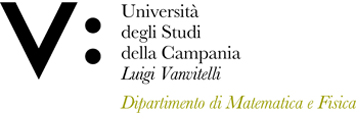Giovanni DE GREGORIO
Insegnamento di QUANTUM COMPUTING
Corso di laurea magistrale in PHYSICS
SSD: FIS/02
CFU: 6,00
ORE PER UNITÀ DIDATTICA: 48,00
Periodo di Erogazione: Primo Semestre
Italiano
| Lingua di insegnamento | INGLESE |
| Contenuti | 1) I postulati della meccanica quantistica; |
| Testi di riferimento | -M. A. Nielsen and I. L. Chuang. Quantum Computation and Quantum Information. |
| Obiettivi formativi | Alla fine del corso, lo studente deve: |
| Prerequisiti | Conoscenze di base di meccanica quantistica e informatica. |
| Metodologie didattiche | Il corso è strutturato in 40 ore di lezioni frontali e 8 ore di esercitazioni in aula. Si consiglia vivamente di partecipare alle lezioni, anche se non obbligatorio, e interagire con l'insegnante. Durante il corso verrà utilizzata la lavagna. Saranno inoltre forniti materiali didattici per approfondimenti dopo le lezioni. |
| Metodi di valutazione | L'esame consiste in un esame orale della durata di circa un'ora, durante il quale lo studente risponde a domande specifiche sulla computazione quantistica e dimostra di aver acquisito familiarità con gli argomenti trattati nel corso. |
| Programma del corso | 1) I postulati della meccanica quantistica: Spazi di stato, evoluzione, misurazione quantistica. L'operatore densità, insiemi di stati quantistici, la decomposizione di Schmidt e purificazione; |
English
| Teaching language | English |
| Contents | 1) The postulates of quantum mechanics; |
| Textbook and course materials | -M. A. Nielsen and I. L. Chuang. Quantum Computation and Quantum Information. |
| Course objectives | At the end of the course the student must: |
| Prerequisites | Basic knowledge of quantum mechanics and computer science |
| Teaching methods | The course is structured in 40 hours of frontal lectures and 8 hours for classroom exercises. It is highly recommended to attend the classes, but not compulsory, and interact with the teacher. The course includes classes using the blackboard. Educational material will also be provided for further study after the classes. |
| Evaluation methods | The exam consists of an oral exam lasting about one hour in which the student answers specific questions on quantum computing and proves to have acquired familiarity with the topics covered in the course. |
| Course Syllabus | 1) The postulates of quantum mechanics: State spaces, evolution, quantum measurement. The density operator, ensembles of quantum states, the Schmidt decomposition and purification; |








